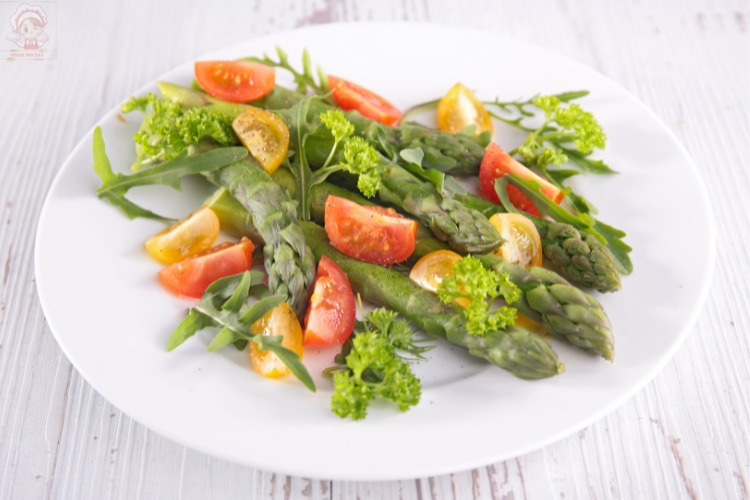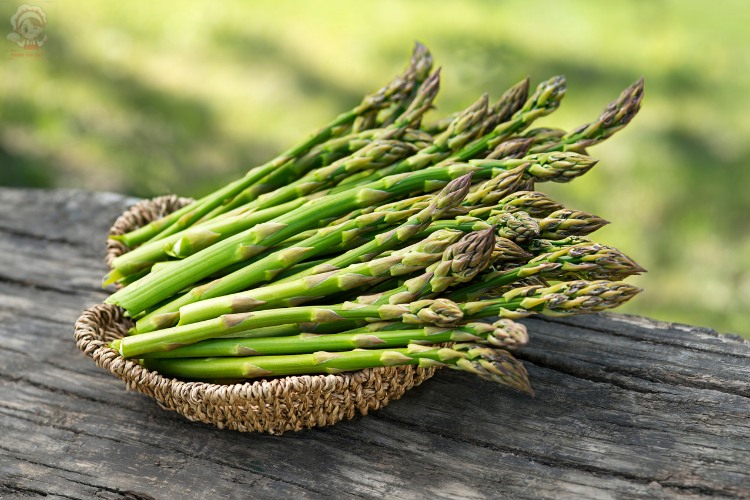The asparagus in the oven provides versatility in seasoning and flavor options. You can easily customize the seasonings and experiment with different herbs, spices, or condiments to complement the asparagus. This versatility allows you to cater to your personal taste preferences or create variations to suit different meals.
1. What are the ingredients in the seasoning for asparagus in the oven?
When seasoning asparagus in the oven, you can use a variety of herbs, spices, and condiments to add a special touch to the dish. Here are a few ideas:
- Olive oil and salt: Drizzle olive oil over the asparagus spears, ensuring they are evenly coated. Sprinkle it with salt to taste, which helps to enhance the natural flavors of the asparagus.
- Garlic and lemon: Toss the asparagus with minced garlic, lemon zest, and a squeeze of lemon juice. The garlic adds a savory note, while the lemon adds a refreshing citrusy flavor.
- Parmesan cheese and herbs: Grate or sprinkle Parmesan cheese over the asparagus before baking. You can also add herbs such as dried thyme, rosemary, or oregano for additional aromatic flavors.
- Balsamic glaze: Drizzle balsamic glaze over the asparagus for a tangy and slightly sweet taste. The glaze adds depth and richness to the dish.
- Sesame oil and soy sauce: Combine sesame oil and soy sauce to create a flavorful marinade. Toss the asparagus in this mixture before roasting for an Asian-inspired twist.

These are just a few examples, and you can get creative by experimenting with different seasonings and combinations to suit your taste preferences. Enjoy exploring the various flavors that can elevate your roasted asparagus into a special and delicious dish.
Visit Foods For Day frequently for more recent articles:
2. How do I make seasoning for asparagus in the oven?
Here’s a versatile recipe to make a flavorful seasoning for asparagus in the oven:
Ingredients:
- 1 bunch of asparagus
- 2 tablespoons olive oil
- Salt and pepper to taste
- 2 garlic cloves, minced
- Zest of 1 lemon
- 2 tablespoons grated Parmesan cheese
- Assorted herbs (such as thyme, rosemary, or parsley), chopped
- Balsamic glaze (optional)
- 1 tablespoon sesame oil
- 1 tablespoon soy sauce
Instructions:
Step 1: Cooking preparation
- Preheat the oven to 425°F (220°C).
- Wash the asparagus and trim off the tough ends.
- In a small bowl, combine the olive oil, salt, pepper, minced garlic, and lemon zest.
- Drizzle the olive oil mixture over the asparagus, tossing gently to ensure an even coating.
- Sprinkle the grated Parmesan cheese and chopped herbs over the asparagus, evenly distributing them.
- If desired, drizzle balsamic glaze over the asparagus for added flavor.
- Place the seasoned asparagus on a baking sheet and spread them out in a single layer.
Step 2: Roasted asparagus
Roast in the preheated oven for about 12-15 minutes, or until the asparagus is tender yet still crisp.
Step 3: Already servings
- Meanwhile, in a separate small bowl, whisk together the sesame oil and soy sauce. Once the asparagus is cooked, remove it from the oven and drizzle it with the sesame oil and soy sauce mixture.
Serve the seasoned asparagus as a delicious and flavorful side dish.
Watch the video tutorial on how to season asparagus in the oven:
Feel free to adjust the seasoning quantities according to your taste preferences. This recipe combines the richness of Parmesan cheese, the freshness of lemon and herbs, the tanginess of balsamic glaze, and the savory flavors of garlic, sesame oil, and soy sauce to create a delightful seasoning for roasted asparagus. Enjoy!
3. Frequently Asked Questions (FAQ) about seasoning asparagus in the oven?
- Q: What temperature should I set my oven to when cooking asparagus?
A: Preheat your oven to 425°F (220°C) for roasting asparagus. - Q: How long should I cook asparagus in the oven?
A: The cooking time can vary depending on the thickness of the asparagus spears. Generally, it takes about 12-15 minutes to roast asparagus until it’s tender yet still crisp. - Q: How do I prepare asparagus before cooking it in the oven?
A: Start by trimming the tough ends of the asparagus spears. You can do this by snapping off the woody ends or by cutting them with a knife. - Q: What seasonings can I use to flavor the asparagus?
A: There are several options for seasoning asparagus in the oven. You can use olive oil, salt, pepper, garlic, lemon zest, Parmesan cheese, herbs (such as thyme or rosemary), balsamic glaze, sesame oil, or soy sauce, among others. - Q: How do I evenly coat the asparagus with seasonings?
A: After trimming the asparagus, place it on a baking sheet and drizzle the desired seasonings or ingredients over the spears. Toss the asparagus gently to ensure it is evenly coated. - Q: Can I add other vegetables to roast with the asparagus?
A: Yes, you can roast other vegetables alongside asparagus. Some popular choices include cherry tomatoes, bell peppers, mushrooms, or carrots. Just make sure to adjust the cooking time accordingly. - Q: Can I make asparagus in advance and reheat it?
A: While it’s best to enjoy asparagus immediately after roasting for the best texture, you can certainly reheat it if needed. Place the roasted asparagus in a preheated oven for a few minutes until warmed through. - Q: Can I grill asparagus instead of roasting it in the oven?
A: Yes, grilling asparagus is another delicious option. Brush the asparagus with oil and seasonings, then grill it over medium heat until it becomes tender and slightly charred. - Q: Can I use frozen asparagus for roasting?
A: Fresh asparagus is recommended for roasting, as frozen asparagus may become too soft and watery when cooked in the oven. - Q: How should I serve roasted asparagus?
A: Roasted asparagus makes a great side dish and can be served alongside various main courses. It can also be added to salads, pasta dishes, or used as a topping for pizzas or omelets.
Foodsforday is the founder of the Foods For Day blog. A lover of cooking, sharing and synthesizing cooking experiences on recipes, kitchen utensils, and spices.
